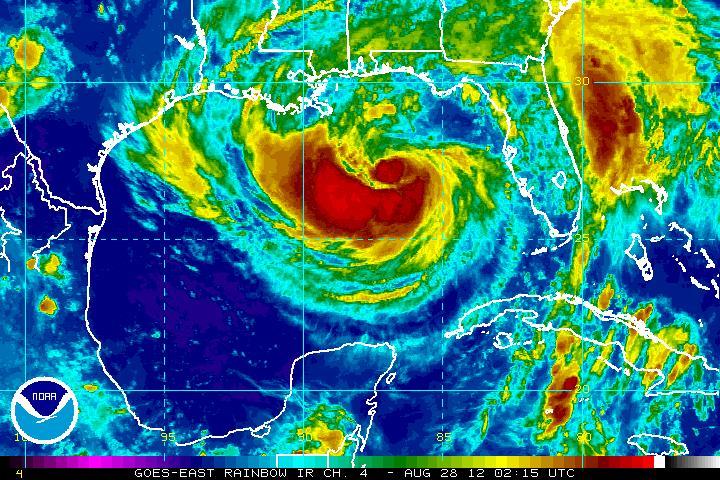
President Barack Obama has declared a state of emergency in Louisiana, as Tropical Storm Isaac threatens to hit the US as a category two hurricane.
Tropical Storm Isaac is heading for New Orleans, possibly as early as Tuesday night, nearly seven years to the day after Hurricane Katrina devastated the city.
The Republican Party delayed by a day the start of its national convention in Tampa, Florida.
Isaac killed at least 24 people in Haiti and the Dominican Republic.
The storm wrought significant flooding and damage in the Caribbean.
Late on Monday, the National Hurricane Center (NHC) warned Isaac could reach category two strength, with top winds of 100 mph (160 km/h). The forecast was revised up from category one.
Barack Obama approved Louisiana’s request for a federal disaster declaration, making available federal funds for recovery activities such as clearing debris.

Earlier, the governors of Louisiana, Florida, Mississippi and Alabama declared emergencies in their states.
The Republican governors of Alabama, Louisiana and Mississippi have cancelled their trips to their party’s convention to focus on disaster prevention efforts.
Isaac is already a large storm and could bring significant damage to areas within hundreds of miles of its centre, officials warn.
The NHC said that at 23:00 EDT on Monday (03:00 GMT on Tuesday), Isaac was centred about 189 miles (305 km) south-east of the mouth of the Mississippi river, with maximum sustained wind speeds of 70 mph (110 km/h).
The storm is moving forward at about 10mph and storm winds extend out about 205 miles (335 km) from the centre.
The NHC warned that wind speeds could reach between 96-110 mph before the storm makes landfall.
Evacuations have already been ordered for some low-lying Louisiana parishes and parts of coastal Alabama.
Wednesday is the seventh anniversary of Hurricane Katrina, which strengthened in the Gulf to a category five storm, before weakening to category three by the time it reached New Orleans.
Federal officials said the levees around New Orleans are now equipped to handle storms stronger than Isaac. Levee failures led to the catastrophic flooding in the area after Katrina.
“It’s a much more robust system than what it was when Katrina came ashore,” Federal Emergency Management Agency Administrator Craig Fugate said in a conference call with reporters.
Craig Fugate also said that Isaac was not just a New Orleans storm.
“This is a Gulf Coast storm. Some of the heaviest impact may be in Alabama and Mississippi,” he said.
A stream of vehicles left New Orleans on the highway heading west for Baton Rouge on Monday, as people made their way to higher ground.
Linda Grandison, who fled her home in 2005 and waited on a bridge for three days before she was rescued by a helicopter, has also decided to leave early, the Associated Press reported.
“You can’t predict God’s work,” she said.
“This is nerve-wracking. I hate leaving my house, worrying if it’s going to flood or get looted. But I’m not going to stay in the city again.”
Evacuations have already been put in place for Louisiana’s St Charles Parish, near New Orleans, and some areas of coastal Alabama.
A hurricane warning is already in effect for some 300 miles of the Gulf Coast in four states from Louisiana to Florida, with lower-level warnings issued for many areas along Florida’s west coast.
Florida Governor Rick Scott told reporters on Monday that 60,000 people were already without power as a result of the storm.
Storm surges of 6-12ft (1.83-3.66m) were possible along the Gulf coast, with the biggest danger in Louisiana, Mississippi and Alabama.
As much as 1ft of rain could fall.
US offshore oil production is expected to be badly hit, as are refineries in lowland Louisiana.
As much as 78% of the Gulf’s crude oil production and 48% of its natural gas production had been closed ahead of the storm, government figures showed.
BP and Chevron have shut down oil production in the Gulf, and BP is evacuating its platform there.
[youtube vvcPZPMm2lI]